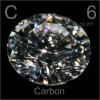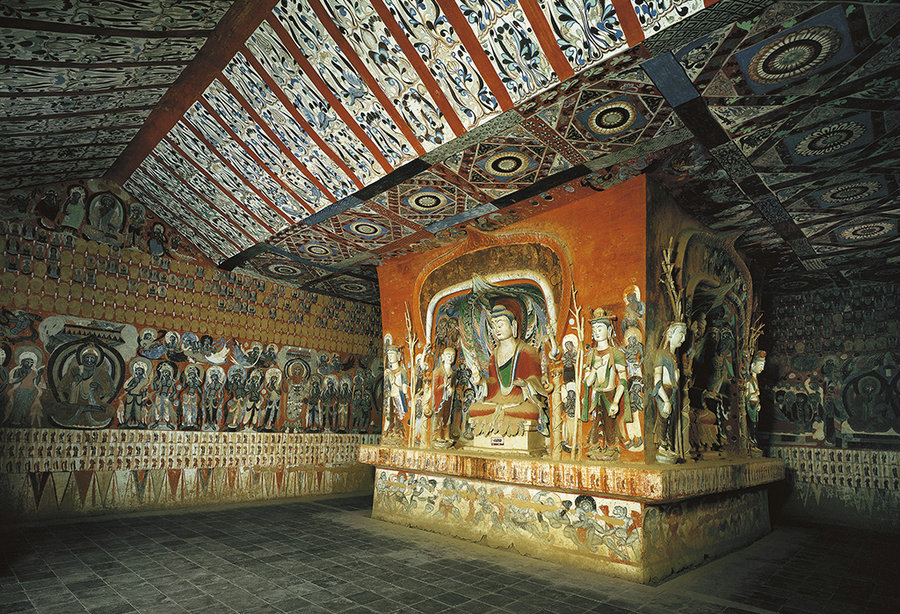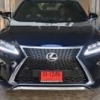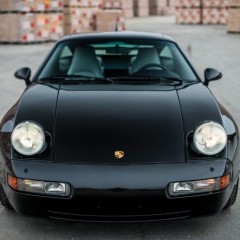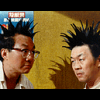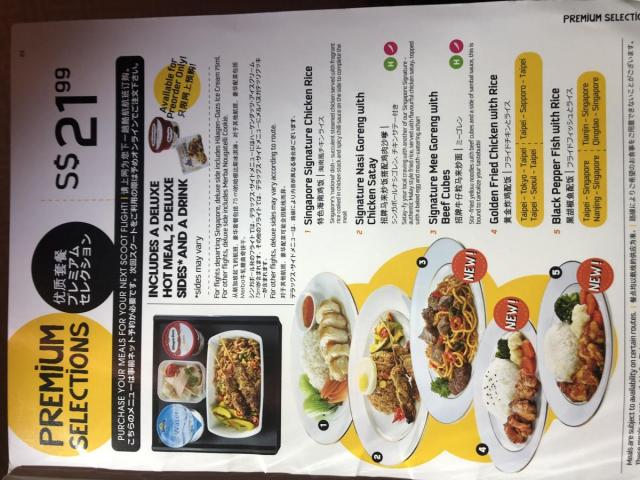Search the Community
Showing results for tags 'CHINA'.
-
Xi Jinping signals intent to remain in power by revealing politburo with no successor https://www.theguardian.com/world/2017/oct/25/xi-jinping-signals-intent-power-successor-politburo-china China’s president unveils his all-male cabinet, but crucially no member is young enough to take the reins from Xi at the end of his second term Xi Jinping has kicked off his second term as leader of the world’s second largest economy, vowing to spearhead the “great rejuvenation of the Chinese nation” and signalling his intent to tower over Chinese politics for decades to come. At just before noon on Wednesday, Xi unveiled the new line-up of China’s top ruling council – the Communist party’s politburo standing committee – leading six besuited comrades out into a blaze of camera flashes in the Great Hall of the People. “Here, on behalf of the newly elected central leadership, I wish to express our heartfelt thanks to all other members of the party for the trust they have placed in us. We will work diligently to meet our duty, fulfil our mission and be worthy of their trust,” Xi said in a 21-minute address that marks the formal start of his second term. Crucially, the all-male group contained no potential successor, since none of its five new members – all aged between 60 and 67 – is young enough to take the reins from Xi after the end of his second term, in 2022, and to then rule for the customary decade. Such is the secrecy that cloaks Chinese politics that the identities of the standing committee’s incoming members were known only as Xi escorted them out onto a scarlet-carpeted stage. Joining Xi and premier Li Keqiang on the elite committee are: Li Zhanshu, 67, Han Zheng, 63, Zhao Leji, 60, Wang Yang, 62 and Wang Huning, 62. “I still can’t get over the fact how the world’s second largest economy, which is declaring this new role of global leadership, is nearly as opaque as the North Korean political system,” said Jude Blanchette, an expert in Chinese politics from New York’s Conference Board research group. “I just find that absolutely striking and in a way almost unacceptable for a system that wants to play such a fundamental role in guiding and shaping the 21st century.” China’s propaganda apparatus has touted this week’s political show as an example of openness and transparency. However, a number of major western news organisations whose coverage of Xi’s rule has irked Beijing were excluded from Wednesday’s event without explanation including the BBC, the Financial Times, the Economist, the New York Times and the Guardian. In his address, Xi outlined his vision for what he called China’s “new era”, an era in which an emboldened and purified Communist party would play an even more prominent role in returning the country to its former glories. “It is my conviction that the great rejuvenation of the Chinese nation will become a reality,” he said, urging his party to become “the backbone of our nation.” “We should never entertain the idea of taking a breather or halting our steps. Instead, we must continue to rid ourselves of any virus that erodes the party’s fabric, make great efforts to foster a healthy political environment of integrity and generate waves of positive energy throughout our party which can build into a mighty nationwide force driving China’s development and progress.” Xi also pledged “a resolute push” to eradicate poverty, to “open China still wider to the world” and hinted at the more assertive and muscular role Beijing is expected to seek on the world stage in the years ahead. “With confidence and pride the Chinese people will be steadfast in upholding our country’s sovereignty, security and development interests,” he said. The unveiling of China’s new ruling council came one day after the end of the 19th party congress, a week-long political summit at which Xi established himself as the country’s most dominant leader since its revolutionary founder Mao Zedong. On Tuesday, Xi’s eponymous political philosophy was enshrined in the party’s constitution alongside those of Mao and Deng Xiaoping, the architect of China’s economic opening to the world. Experts say that momentous and highly symbolic achievement puts Xi in a virtually unassailable position at the pinnacle of the 89 million member organisation. Having failed to anoint a successor, he is now likely to be calling the shots in Chinese politics well into the 2030s. With Xi now entering his second, although perhaps no longer final five-year term, thoughts are turning to what the next stage of the Xi era might hold. Supporters claim that having used a ferocious anti-corruption campaign to purge rivals and consolidate his grip over the party during his first five-year term, Xi will now turn his mind to comprehensive reforms of China’s economy. “I think the real reform just began,” said Wang Wen, a pro-establishment scholar from a thinktank linked to Renmin University. Wang argued that Xi would enter his second term with “much more authority” and a greater ability to implement his blueprint for China. Such optimism was echoed in China’s party-run media on Wednesday as cadres lined up to heap praise on their all-powerful leader. “We firmly believe that if people all over the country roll up their sleeves under the guidance of Xi’s Thought … we will move steadily into the future with the irresistible force of a high-speed train,” Chen Meifang, a Shanghai railway official, was quoted astelling the Beijing Daily. However, such hopefulness is widely disputed. Blanchette said he expected to see a “super-sized version” of Xi’s first-term policies in his second stint, as China’s leader pursued what he saw as his “program of Chinese greatness”. That would mean accelerating efforts to build a modern, battle-ready military that could begin to push the United States further and further out of what China saw as its Pacific backyard; an increasingly assertive foreign policy in regions such as the South and East China seas; and continued efforts to promote a hi-tech economic revolution by championing huge companies that were either controlled or heavily aligned with the state. It would also mean that the Communist party – and the Communist party only – would continue to lay down the law, in all aspects of Chinese society. In an editorial celebrating the start of Xi’s “new era” on Wednesday, the People’s Daily, the party’s mouthpiece, argued: “History has shown and will continue to show that without the leadership of the Chinese Communist party, the idea of national rejuvenation is a fantasy.” “We should hunker in for a long winter of tight political control,” Blanchette predicted. We should hunker in for a long winter of tight political control Jude Blanchette Elizabeth Economy, the director for Asia studies at the Council on Foreign Relations, said she saw this week’s congress “as affirmation of the direction in which Xi has already been moving the party as opposed to a point at which now we are going to see the real Xi Jinping and his real reforms emerge”. She added: “I think what we are going to see is an intensification along the same lines.” Economy balked at the suggestion that Xi – whose first term has witnessed an unusually fierce crackdown on party opponents and human rights – might suddenly emerge as a political reformer. “I don’t think a crypto-liberal would do what he has been doing over the past five years. I don’t think a crypto-liberal lets Liu Xiaobo die in jail, and the arrests and the intensification of the attacks on the [human rights] lawyers. That is not a crypto-liberal,” she said. Blanchette said Xi had shown a remarkable “mastery of the political system” in China during his first term in power: “The second question though is does that mean he has an omniscience or an omnipotence to deal with all the significant challenges that China is facing? “There is a huge list of challenges that Xi Jinping has to deal with,” he added, pointing to a gradually slowing economy, a looming debt crisis and the possibility of a nuclear conflagration on its doorstep. “He now has the power to do it. But how he deals with these challenges will be one of the most important indicators of whether or not he is able to stay on for the term that he feels he deserves.” Additional reporting by Wang Zhen. What 'Xi Jinping Thought' Stands For https://www.forbes.com/sites/salvatorebabones/2017/10/22/what-does-xi-jinping-thought-mean-and-how-does-it-compare-to-america-first/#2bfee5ab3262 Xi Jinping is universally regarded as China's most powerful leader since Deng Xiaoping, and perhaps since Mao Zedong. Both Deng and Mao left their marks in the charter of the Communist Party of China, and the rumor is that Xi will be their first successor to do the same. Mao's "mass line" and Deng's "seeking truth from facts" have become official tenets of Communist Party dogma. Xi's "socialism with Chinese characteristics for a new era" may soon join these august concepts as official truth. But just what does "Xi Jinping Thought" really consist of? To answer that question, it helps to compare Xi's governing principles to those of the four preceding "paramount leaders" of China's Communist Party. Xi versus Mao Xi Jinping is most often compared to Mao Zedong, China's revolutionary leader, red emperor and communist theologian. Mao's political maxims were collected in the Little Red Book once read by leftist college students and Latin American guerillas. Mao Zedong thought is not all that bad, if you happen to be planning a people's revolution to overthrow your government. Unlike Lenin and most European Marxists, Mao taught that revolutions had to come from below. And unlike most revolutionaries, he still fought to overthrow the government even when he was the government. The infamous Cultural Revolution that rocked Chinese society from 1966-1976 was the result. Xi is no revolutionary, and he is certainly no Mao. Xi'sChinese Dream is a "moderately prosperous society," not a communist utopia. Xi does talk a lot about "national rejuvenation," but that's really just a way to avoid using the Western word for what he really means: renaissance. Xi's Chinese renaissance is all about China's space program, high speed rail network and high technology parks. But a real Chinese renaissance requires the reversal of China's long-term brain drain to the United States and other English-speaking countries. The problem? Most Chinese scientists are unwilling to give up their tenured positions overseas to take a chance on a permanent return to China. Barring a reversal of epic proportions, in 2021 Xi will preside over the centenary of the Chinese Communist Party. That will be as good a time as any to finally lay Mao Zedong Thought to rest for good. If Xi has his way, they may just take the opportunity to bury Mao along with it. He's been waiting long enough. Xi versus Deng Soon after the death of Mao, his long-time frenemy Deng Xiaoping put paid to the Cultural Revolution and started China on the path to opening and reform that it has followed for the last 40 years. Famous for saying that it was OK for some people to get rich before others, Deng was repeatedly condemned by Mao as a "capitalist roader" -- which, as soon as Mao died, is exactly what he turned out to be. To facilitate his economic reform agenda, Deng urged that China should "keep a low profile" in international affairs, biding its time while building its strength. Xi'sstrive for achievement strategy couldn't be more different. In his landmark Communist Party Congress speech, Xi pledged that China would have a "world class" military by 2050, in line with his policy of relentless maritime expansion in the South China Sea. Xi has departed radically from Deng's advice on foreign policy, but what Xi shares with Deng is a staunchly conservative preference for order over chaos. Deng ruthlessly suppressed the Tiananmen Square democracy movement in order to preserve the rule of the Communist Party. Xi has much more subtly turned the screws on political dissent using the more discriminating but perhaps more effective tools of online surveillanceand selective imprisonment. As the ever-quotable Deng said himself, "it doesn't matter whether the cat is black or white, as long as it catches mice." Xi versus Jiang Deng Xiaoing's successor Jiang Zemin is perhaps best remembered for the fact that everything done under his leadership was done "with Chinese characteristics." Deng may have coined the phrase "socialism with Chinese characteristics" to justify his introduction of the market into China's planned economy, but under Jiangthe phrase became a standing joke. Jiang Zemin codified these Chinese characteristics into the "Three Represents": the idea that in addition to the poor, the Communist Party of China would also represent China's business and cultural elites. Under Xi, this has evolved into the Two Represents, and if China's new rich get their way it may soon degenerate back into a novel kind of One Represent. Xi versus Hu Hu Jintao's major contribution to the intellectual life of the Communist Party was to bring Confucius back into the fold. Long prescribed under Mao as the reactionary idol of the pre-revolutionary patriarchy, today Confucius is back in China, with no small thanks to Hu, who rehabilitated Confucian thought, reopened Confucian temples, and chartered the Confucius Institutes to become China's cultural ambassadors to the world. Hu's trademark slogan was the "harmonious society" -- i.e., trust the government and don't complain and everyone can live in harmony. No word on what thenotoriously cranky sage, who got himself successively kicked out of ten different countries for criticizing their poor leadership, might have thought of this. Hu later extended the harmonious society to the harmonious world (i.e., trust China and don't complain and the world can live in harmony). With his One Belt, One Road expansionism and South China Sea island building, Xi seems keen to continue Hu's expansive foreign policy program, only with even less emphasis on the "harmonious" part of the equation. "Party First" Xi Jinping Thought, in a nutshell, seems to boil down to something resembling "America First, with Chinese Characteristics." By all accounts, Xi and U.S. President Donald Trump got along surprisingly well at their first meeting in April, perhaps because at a level deeper than mere speech they spoke the same language. If Xi's political philosophy isn't exactly China First, it is something close to it but at the same time distinctively Chinese: something like "Party First." And putting the interests of the Communist Party first is one thing he shares with all of his predecessors. Like Deng, Xi is a pragmatist who will stay on the capitalist road so long as it leads to much greater wealth than any other. Like Jiang, he is very happy to lead a ruling party dominated by his country's business elite. Like his immediate predecessor Hu, he is crafty enough to use patriotism and ethnic pride as tools to keep ordinary Chinese (if not necessarily China's minority groups) on his side. And like Mao, Xi seems to be ruthless enough to succeed in making his own Chinese Dream a reality. As long as he continues to put the Party first, Xi is likely to maintain his grip on power -- and the Party's loyalty. And as long as the Party puts Xi first, he is likely to have no cause to complain. Xi Jinping Thought may not sell as many books as Mao's did, but come 2021 it will be Xi who sets the course for the next 100 years of the Communist Party of China.
-
Expect more China EV brand to hit our shore in the next 2 years, as the big wave have just started. Ultimately, only the fittest will survive on our tiny island (since we have a fixed quota for new car registration each month/year). Another point to ponder: Is PA changing their game plan (betting heavily on Chinese EVs) with the declining market share of Audi? Chinese EV brand Xpeng to be launched in Singapore by second half of 2024 Xpeng, a Chinese electric vehicle (EV) brand backed by German carmaker Volkswagen, will be launched in Singapore by the second half of 2024. Sources with close knowledge of the negotiations said the EV maker appointed Premium Automobiles as its distributor recently. This will be the second Chinese EV brand that Premium is representing, after Zeekr from Geely. The first Xpeng model to retail in Singapore is expected to be the G6, a sport utility vehicle that is about the same size as the Tesla Model Y. This is likely to include a single motor version capable of covering 580km on a single charge. Premium Automobiles did not respond to queries on Xpeng when approached for comment. The dealership, which is also the retail partner of German car brand Audi, would say only that Zeekr remains on track to be launched here by the third quarter of 2024. The Straits Times has also contacted Xpeng for comment. Xpeng’s impending foray into Singapore comes as the EV adoption rate here rises. In 2023, EVs made up 18.1 per cent of total car registrations, up from 11.7 per cent in 2022 and 3.8 per cent in 2021. The Chinese brand is regarded by industry experts as among the strongest contenders against Tesla, although it delivered just 141,600 units in 2023 – a fraction of the 1.08 million units managed by the American EV brand. It sells left-hand drive models in China, Denmark, the Netherlands, Norway and Sweden. On March 11, the South China Morning Post reported that Xpeng plans to launch right-hand drive models in the second half of 2024 as part of its global expansion strategy. Volkswagen holds a 5 per cent stake in the company from Guangzhou, China, and the companies are working to develop two VW-branded models for the Chinese market. Automotive consultant Say Kwee Neng said Xpeng is one of three Chinese EV brands – the other two being Nio and Li Auto – that are well regarded for their products’ technology, design and level of sophistication. “There is a lot of hype behind these three brands, but ultimately, it will be down to the representative in Singapore to bring in the right model mix and be relevant. We have already seen how BYD has broken down walls to make Chinese EVs desirable to consumers here,” Mr Say added. Chinese EV brand BYD was the fourth-biggest selling brand in Singapore in 2023, outselling the likes of Nissan (fifth), Hyundai (seventh) and Tesla (ninth). Xpeng joins at least five other Chinese brands that are slated to enter the Singapore market, including GAC Aion, which will be launched in April by Vincar. Their addition will more than double the number of Chinese car brands from the four in 2023 – BYD, MG, Maxus and Ora. Mr Say believes that Chinese EV brands are hastening their move into Singapore to build up global credibility as they try to break into European markets. Automotive analysts expect EV sales in China to grow at a slower pace in 2024, even as domestic EV brands and Tesla have been cutting prices to boost demand. This slowdown in demand is pushing Chinese EV brands to look abroad for sales, some industry insiders believe. The other Chinese EV brands slated to launch here are Smart, which Cycle & Carriage will roll out in the first half of 2024; Chery, which is represented by Vertex Automobile; Seres, which is imported by Hong Seh; and Neta, which Vincar has the rights to distribute.
- 111 replies
-
- 15
-

-
Dear Forumers, Starting this topic as I believe some of us here may be in the same situation as me and I also hope to learn from the rest of the EV forumers here with respect to being a likely first-time EV owner. So, my 'hunt' started with a visit to the car showrooms at Leng Kee with a family member who was shopping for a car. Unwittingly, the 'shopping bug' latched on to me as well and I found myself 'magically' drawn to the showrooms myself with my family in tow. With regards to my current profile, I am driving an Alphard (Year 2021) thus when comparing 'apple to apple', an equivalent replacement would be another MPV. For the new Alphard, it costs anywhere between $360,000 - $400,000 (depending on dealer) with an annual depreciation from $31,000 onwards. From the online pictures and review, I didn't bother to check out the current Alphard as there wasn't any significant updates from my current ride. Instead, I paid a visit to the Lexus showroom to view the Lexus LM (7-seater). At > $600k, I didn't find the interior quality to be worthy of it's price tag. Even the SA commented that the LM is meant for would-be Alphard buyers with money to spare and distinguishing themselves from the 'peasants' Alphard crowd. Unsatiated, I looked elsewhere and found my gaze drawn to the EV MPVs from China, that were flooding the market coincidentally at this point in time. And thus, the impetus for this topic as to who will dethrone the long undisputed king of MPVs that is the Alphard. 1. Xpeng X9: https://drive.google.com/file/d/1e6BfFyfb5mHigWXyuQo2YwiXHm-iblhs/view?usp=sharing This is the newest kid on the block and while the car is in the showroom, it is undergoing homologation at LTA thus no test drive is possible. As per the SA, the selling price is likely to be at $310,000 and depreciation (my estimate) about $28,000 - $30,000. Pros: This is the most futuristic MPV among the lot, in both its exterior and interior. My family loved the interior the most due to the TV (for rear passengers) ala the 7-series which folds down dramatically at the touch of a button. Most of the other functions in the cabin are also operated by 1-touch buttons making it seamless and modern. Last but not least, its 3rd row recess electrically into the boot at the touch of a button creating a completely flat rear cabin. Cons: In my opinion, the looks of the X9 is going to be divisive with polarising opinions. Personally, I am not able to fathom it's appearance, especially its rakish rear 3rd quarter. In some ways, it seems like it is modelled after the Tesla Cybertruck but I don't think it was pulled off as successfully. Therefore, I have my doubts as to its eventual resale value due to this main consideration. 2. Zeekr 009: https://drive.google.com/file/d/10SmD8B66eUKu5shV8Q2-SDRBFnk5fGOK/view?usp=sharing This is the car with a similar price tag as the new Alphard. I didn't enquire with the SA about the depreciation due to its initial hefty price tag and associated cost (more on that later). Pros: This is also a modern-looking MPV that drew comments like 'it looks like a Rolls Royce' from my family. It also features the most luxurious interior with it's trimmings and overall build quality. Most cars will also be left helpless in it's wake in a traffic light sprint as it's 0-100km/hr is in a class leading 4.5 seconds. Cons: Beyond the hefty price tag, the road tax is at a crazy $6.5k per annum. As one of the motivation for switching to EV is to lower the operating cost, this is definitely a huge red flag and therefore reduces it's appeal (didn't even test drive as don't want to waste the SA time). 3. Maxus Mifa 7/9: https://drive.google.com/file/d/1vDibRvN8KYnmNLWnWJQc6f0qldVE_ka3/view?usp=sharing This is the most affordable car among the lot. Visited the showroom just to draw a level of comparison but didn't test drive as wasn't really keen on it. A note though that, this was the only showroom where we were not accosted by a SA thus maybe they had hit the sales quota for 2024. Pros: This has the lowest price tag and first mover rights as it was the first large 7-seater electric MPV to make its foray into the local market. Cons: No disrespect to current Mifa 7/9 owners, but I feel that the interior build quality and trimming reflects in the price tag. For the Mifa 9, the instrument cluster and head unit is really below par as more of an afterthought. However, I believe this was the best option in the past as it was the only sizeable MPV that is an EV and therefore, owners really didn't have much choices to consider. 4. Denza D9: https://drive.google.com/file/d/10YwRQpBtBkR2Jj_Rjc5syg2nzcVwhsHD/view?usp=sharing This was the only car I test drive as from the online research, it had ticked all the right boxes. Pros: First and foremost, it is unpretentious in its intention and looks like an Alphard. Therefore, I believe its design is more palatable for existing Alphard owners making the transition. Next, the price tag (depreciation at $27-$28k for the FWD Elite model) is 'reasonable' in current market conditions and undercuts the Alphard by $3-4k a year in depreciation. It makes decent power and have sufficient range, and it's road tax is only $480 more than the new Alphard. It's interior build quality and trim is also 'value for money' in terms of its quality. An initial collaboration between BYD and Mercedes, this is apparent in the cabin such as the wood trimmings (same as in Mercedes products) and ambient lighting. It also offers better seat comfort in the 3rd row as compared to the Alphard/X9 and perhaps comparable to the 009. This is because the seats are inclined a few degrees towards the ceiling thus making it significantly more comfortable as compared to the Alphard which is flatter and has shallower seat bottoms. In terms of the drive, it also feels more 'continental' - same secured/rooted/engaged sensation as premium makes that I had driven before that hails from Germany/England. Cons: From the B-pillar onwards, one may be surprised to find that the D9 offers less in terms of cabin space than the Alphard despite its longer length/wheelbase. This is due to the 'thicker materials' used (like the captain seats) and a 410L fixed boot (Alphard has none). The ambient lighting also looks like it is underpowered (too dim even at its brightest settings) unlike its ex-sister brand Mercedes. Finally, there isn't any TV for rear passengers like the 009 and X9 which was a severe disappointment for my family (as we have 1 in our existing Alphard). As you would have guessed it by now, all things considered, the Denza D9 is in my opinion going to give the Alphard a real run for its money in its uninhibited attempt to wrestle the 'King of MPV' throne in Singapore. There is nothing wrong with the Alphard (past and present). From the B-pillar onwards, in my opinion, it beats the more luxurious contemporaries such as the Mercedes S-class or 7-series. It also leverages intensively on its branding as the most reliable car brand in the world (and rightfully so as my past 3 years of ownership had been uneventful compared to my previous experiences). On the flip side, it offers an emotionless and soul-less drive. It's interior build quality is at best average and the 3rd row seat comfort is mediocre. With the new Alphard at >$30k in annual depreciation, it really makes no financial sense at all to choose the new Alphard as its interior build/quality is still average and features almost non-existent. For MPVs, the 2nd row seats are the 'money seats' and therefore, it must be the most important point of reference for these luxury MPVs. For instance (past/new Alphard), in its most basic trim, there are no touch-screen control panels at its captain chairs, no ventilated or massage seats. And all these comes standard in the D9. Therefore, all things equal, it is bewildering why one would consider the new Alphard over the D9, when you paying more for less! Furthermore, in terms of operating cost and assuming an annual mileage of 20,000km for the average driver and based on a fuel consumption of 12km/l and RON 95 petrol at $2.20/l for the Alphard, it costs $3667 in petrol cost per year. For the D9, it has a consumption of 4.66km/kwh and based on $0.5 kwh charging costs, one would pay $2145 per year which translate to a saving of $1522. If one would to minus $480 (due to the higher annual road tax of the D9 compared to the Alphard), it would still translate to a saving of $1042 yearly. This saving would be even higher if petrol costs increases and if one has access to home charging (at $0.3 kwh compared to 3rd party service providers). Also, we haven't factored in the lower maintenance costs of EV (dealer for D9 offering 10-years battery warranty/maintenance) compared to ICE. All-in-all, it is certainly financially compelling to jump ship to the D9. Finally, what may be the other cons stopping Alphard owners? To me, it would be the branding and resale value down the road. And I also appreciate any other forumers inputs who have been there and done there (by transiting to EVs). At $300k a pop, the D9 ain't exactly loose change thus I am also worried if I had missed out any 'blind spots' in my analysis. Awaiting your valuable inputs and hope my sharing had offered other forumers who are in the same situation as me in making a better decision on their next purchase, thanks!
- 45 replies
-
- 15
-

-
Ngee Ann Polytechnic said the school has no affiliations with any political parties. The Chinese embassy in Singapore noted that one of the organisations referred to in the job descriptions in the listings does not exist in China (中国共产党青年团). “The information contained in the two job postings is fake information, clearly untrustworthy and unreliable,” it said. The Ministry of Home Affairs (MHA) told The Straits Times on Dec 24 that it is aware of the matter and that police reports have been received. https://www.straitstimes.com/singapore/mha-looking-into-job-listings-supposedly-by-ngee-ann-poly-branch-of-communist-youth-league-of-china?utm_campaign=stfb&utm_medium=social&utm_source=facebook&fbclid=IwZXh0bgNhZW0CMTEAAR2YanfjMlxLR6G4CDQp7ZSlkR8zD8pBErPeKIg2s9IwdUA8u8UmTuv7BWo_aem_q69E1MfXtIZaxayMTsmrEA&_nei=00606c7d-6f99-47f1-9ebf-0cf30c1d5828
-
The last few years I have been planning driving trips to USA and Australia, quite hectic and taking alot of efforts to put together. So this coming year decided to take a breather before another epic USA trip in 2026. Then out of nowhere, this short clip popped out and piques my interest: I took some efforts to find out more about this train to Lhasa. In brief, the train departs from Xining spanning 2000km and taking about 21.5hrs, costing about RMB800 per way for 4-berth soft-sleeper. However as you need to apply for permit to enter Tibet, best let the tour company assist to book both the train tickets and Tibet permit for you. But I found out that there are also other train packages that can take you from major cities such as ChongQing, Beijing, Shanghai, Guan Zhou, etc, etc, with Xining to Lhasa as the core component of the trip. So my intention is to fly to either Beijing or Guang Zhou to take the train rides to Lhasa, spent a few nights in Lhasa, then take the scenic train back to the city and spend a few days jalan around before flying back to Singapore. Currently I am thinking of Guang Zhou with 53hrs train time haha. https://www.tibettravel.org/tibet-train/xining-to-lhasa-train.html And there are also other train rides in China that are very scenic, taking passengers through beautiful terrains, which I am also considering with one departing from Fuzhou heading to Hefei with stops at Huang Shan.. As never recall anyone here sharing on such trips, I would like to ask around if anyone here has embarked on such trips before? I have come across many Youtube videos and experience seems quite positive. And would be good also if you feel motivated to take on such rides haha. Feel free to contribute. I would not be moderating, just putting out awareness that such trips are easy to put up and embark. If I were to go on such trip by end of the year, I am sure to do some sharing. This is another video from Beijing to Lhasa with some mention about high altitude sickness and that the trains provide such facility:
-
So I'm a big movie buff, and visiting places where movies I watched were filmed is a big deal.. So when a work opportunity came to visit Lanzou in Gansu Province came, a little light bulb lit up and I thought, New Dragon Gate Inn! One of my favorite shows from the 90s was filmed in Dun Huang and I can work something in to visit it! This was one of the first HK movies to be filmed in China and what a location! Plus, I get to overload on Lanzhou La Mian (兰州拉面), another one of my favorite stuff. And the further I research, the more interesting the sites over there. Now getting over to Lanzhou is no mean feat, requiring two flights last over 10 hours with stops in between and more driving and flying to reach the remote sites. There will also be extreme heat, dry searing conditions especially I have to go during the height of summer for the work part. If you think the two week spell of rainless conditions is hot, try 40c heat standing in the desert barefoot.... So begins my journey..
- 237 replies
-
- 21
-

-
.png)
-
Hooray finally Taiwan will be liberated from the imperialists! Go CCP go! https://www.bloomberg.com/news/articles/2022-08-02/china-announces-military-drills-encircling-taiwan-from-aug-4-7-l6cc5ljn China Plans Four Days of Military Drills in Areas Encircling Taiwan - Beijing declares provocative show of force after Pelosi lands - Taiwan’s ruling party calls on China to be ‘responsible power’ By Sarah Zheng, 2 August 2022 at 22:29 GMT+7Updated on3 August 2022 at 00:12 GMT+7 China will conduct large-scale military drills and missile tests around Taiwan in a defiant show of force after House speaker Nancy Pelosi became the highest-ranking US politician to land on the island in a quarter century. Beijing announced six exclusion zones encircling Taiwan to facilitate live-fire military drills from Thursday to Sunday, with some of the areas crossing into the island’s territorial waters. The size and scope of the areas could set the stage for the Chinese military’s most provocative actions near Taiwan in decades. An aircraft carrying US House Speaker Nancy Pelosi arrives in Taipei, Aug. 2. Photographer: Lam Yik Fei/Bloomberg Separately, the People’s Liberation Army said exercises could start as soon as Tuesday, leaving open the possibility of military activities around Taiwan while Pelosi was visiting. The operations include “long-range live firing in the Taiwan Strait” and “regular-guided fire testing in the eastern waters” off Taiwan from Tuesday evening, the PLA said. “This action is targeted at the US’s shocking recent major escalation on the Taiwan issue, and serves as a serious warning to Taiwanese independence forces or those seeking independence,” Shi Yi, a spokesperson for the Eastern Theater Command, said in a statement. A map released by the Xinhua news agency in China details areas that will be used for military drills encircling Taiwan from Aug. 4-7. Source: Xinhua. During the military drills, “relevant ships and aircraft should not enter the above sea areas and airspaces during this period,” the official Xinhua News Agency said in a report late Tuesday, which gave coordinates for the exercises. The exercises highlight the risk that Taiwan tensions could exacerbate existing supply chain woes. The Taiwan Strait is the primary route for ships passing from China, Japan, South Korea and Taiwan to points west. Almost half of the global container fleet and 88% of the world’s largest ships by tonnage passed through the waterway this year, according to data compiled by Bloomberg. Taiwan’s defense ministry said 21 Chinese military aircraft entered its air-defense identification zone Tuesday, compared to four the day before. The PLA has stepped up its flights near Taiwan in recent months, and ramps ups the show of force around key events, including visits by US poltiicians. Pelosi became the first US House speaker to visit the island in 25 years when her military aircraft arrived at Songshan Airport shortly before 11 p.m. local time. China considers Taiwan part of its territory and protests diplomatic visits to the democratic island. The planned drills would be the most serious show of force by China around Taiwan since at least 1995, when Beijing test-fired missiles into the sea near the island. That move was part of China’s protests against President Bill Clinton’s decision to let Taiwan’s first democratically elected president, Lee Teng-hui, visit the US. Back then, China also declared exclusion zones around target areas during the tests, disrupting shipping and air traffic. Pelosi plans to hold a joint press briefing with President Tsai Ing-wen at about 10:50 a.m. Wednesday, the Taiwan leader’s office said in a statement. She is expected to depart the island later that day to continue her Asia tour visiting US allies South Korea and Japan. Taiwan’s ruling Democratic Progressive Party called on China to exercise restraint and stop acts of military and political intimidation. China should “demonstrate the demeanor of a responsible power,” DPP spokeswoman Hsieh Pei-fen said in a statement late Tuesday. “No threatening remarks or provocative actions can reduce even slightly the determination of Taiwan and its international friends to defend democracy and freedom,” she added.
-
With travel opening up, many are catching up on the in person meetings that have been replaced by zoom, and more people are now going back to traveling. With a brace of invites, I got invited to this place for work and teaching, and whilst I knew little about this place initially, a quick search showed that it was the land of the Hakka, and that meant that I could see some of the famed ancient abode of the Hakka, and also enjoy their cuisine. And no... it's not yong tau foo but much much more... The most direct route from Singapore is via Xiamen, then an hour's worth of fast train to reach Long Yan, a city of a few million located in a basin surrounded by mountains in the Fujian Province. You can also reach it via trains from HKG or other larger airports. To whet your appetite on what this place is about... how about some pictures of the most famous attractions first?
- 41 replies
-
- 16
-

-
AUDI E Concept Noticed something unusual with this new concept from Audi? The grill (or rather the lack of one), it headlights, taillights on the rear bumper, or yah you get it, the missing 4 rings. If I tell you this is NOT an Audi, I believe one of the very first thing that pops up in your mind is that this a copycat from China, am I correct? Well the car IS from China, but just NOT copycat. This isn’t an Audi but an AUDI. Confused? So am I. Audi Is Launching a New Car Company Called… AUDI tl;dr: This a new sub brand by Audi and China SAIC, for the Chinese. With many new sub-brand formed in China every other weeks, they decided to go with AUDI and call it a day. To prevent confusion (what an irony), its logo is a 4 letter words in capital, instead of the 4 rings on the parent Audi. These AUDIs will peacefully coexist with the regular crop of Audis featuring the historic logo harkening back to the Auto Union era. And you have guess, the brand new AUDI will only be carrying EVs, no gasoline model in its lineup of 3 model (in 2025). On a side note, if one day you see a CARBON82 in MCF, it is not me but maybe a new account of Carbon82 for posting some nonsense here. @kobayashiGT boleh / KYM?
- 10 replies
-
- 21
-
.png)
-

-
20 single-deck electric buses each from BYD and ST Engineering Land Systems 10 single-deck and 10 double-deck electric buses from Yutong The buses will progressively arrive in Singapore from next year, with the final batch delivered in 2020 Source: The Straits Times
-
When you cannot beat them, BAN them. Damn United States of Ass! GoPro used to be the leader in portable action camera and the pride of US, but have since been beaten (badly) by DJI in both function and cost, so banning DJI seems to be a natural progression. Just like what they did to Huawei when it become a threat to Apple 🍎 News by Reuters WASHINGTON, Oct 18 (Reuters) - China-based DJI sued the U.S. Defense Department on Friday for adding the drone maker to a list of companies allegedly working with Beijing's military, saying the designation is wrong and has caused the company significant financial harm. DJI, the world's largest drone manufacturer that sells more than half of all U.S. commercial drones, asked a U.S. District Judge in Washington to order its removal from the Pentagon list designating it as a "Chinese military company," saying it "is neither owned nor controlled by the Chinese military." Being placed on the list represents a warning to U.S. entities and companies about the national security risks of conducting business with them. DJI's lawsuit says because of the Defense Department's "unlawful and misguided decision" it has "lost business deals, been stigmatized as a national security threat, and been banned from contracting with multiple federal government agencies." The company added "U.S. and international customers have terminated existing contracts with DJI and refuse to enter into new ones." The Defense Department did not immediately respond to a request for comment. DJI said on Friday it filed the lawsuit after the Defense Department did not engage with the company over the designation for more than 16 months, saying it "had no alternative other than to seek relief in federal court." Amid strained ties between the world's two biggest economies, the updated list is one of numerous actions Washington has taken in recent years to highlight and restrict Chinese companies that it says may strengthen Beijing's military. Many major Chinese firms are on the list, including aviation company AVIC, memory chip maker YMTC, China Mobile , and energy company CNOOC. In May, lidar manufacturer Hesai Group (ZN80y.F), opens new tab filed a suit challenging the Pentagon's Chinese military designation for the company. On Wednesday, the Pentagon removed Hesai from the list but said it will immediately relist the China-based firm on national security grounds. DJI is facing growing pressure in the United States. Earlier this week DJI told Reuters that Customs and Border Protection is stopping imports of some DJI drones from entering the United States, citing the Uyghur Forced Labor Prevention Act. DJI said no forced labor is involved at any stage of its manufacturing. U.S. lawmakers have repeatedly raised concerns that DJI drones pose data transmission, surveillance and national security risks, something the company rejects.
-
Watched a repeat of TopGear (episod in china) and the 3 men condemned whatever cars made in china. I think today, china's cars are not really up to international standard yet in terms of safety, performance, etc but since these B&B cars are for their domestic markets where the majority of buyers dont really know anything better, china car makers will continue to churn out millions of mediocre cars yet still find buyers queue up, end of the days making tons of money. Is there a incentive for them to make better cars, to match the quality/performance etc of say VW etc, let alone the highend conti/jap/korean cars? Those china buyers who have the taste / money for better cars, in typical chinese 'culture', will buy imported cars, coz no china car makers have the prestige / history / brandnames to attract buyers who want not only good cars, but also 'face'/status only brands like Merc/BWM (RR also) etc could provide. Patrioism is more or less non existent when it comes to the rich, except state owned companies buying mic highend cars for their bosses? Bottomline, will it be almost unforeseable china made cars will ever match the quality / status of highend foreign-made cars? not in the next 10/20 years? The expanding domestic B&B car markets are big enough to occupy them for a long time, export is hardly something they have time to think about.
-
https://asia.nikkei.com/Business/Startups/China-startup-makes-large-flexible-solar-panels-in-industry-first?utm_campaign=GL_asia_daily&utm_medium=email&utm_source=NA_newsletter&utm_content=article_link&del_type=1&pub_date=20220719123000&seq_num=2&si=44594 China startup makes large, flexible solar panels in industry first Japanese-developed perovskite technology goes into mass production Pioneered by Tsutomu Miyasaka in 2009, perovskite cells are a bendable, lightweight alternative to conventional silicon solar cells. (Photo by Manami Yamada) YUKI MISUMI, Nikkei staff writerJuly 19, 2022 02:00 JST TOKYO -- A Chinese startup this month became the first in the world to mass-produce large, bendable perovskite solar panels, based on technology initially developed by researchers in Japan. DaZheng (Jiangsu) Micro-Nano Technologies invested 80 million yuan ($11.8 million) to build a production line with an annual capacity of 10 megawatts in Jiangsu Province. The 40 cm by 60 cm panels will be cut into smaller pieces and shipped to smartphone and tablet makers in China. DaZheng will invest 200 million yuan in 2023 to expand its annual production capacity to 100 MW, Chief Technology Officer Li Xin told Nikkei. Perovskite solar cells were pioneered in 2009 by Toin University of Yokohama engineering professor Tsutomu Miyasaka and his team. Although these lightweight cells have a power conversion efficiency of around 10% -- about half that of silicon cells -- they can be incorporated into windows, walls and more. Smaller perovskite cells have been mass-produced before, but DaZheng is the first to do so for large panels. While these cells currently cost three times as much to make as conventional silicon cells, this could potentially be brought down to half at a higher scale. Lightweight and bendable, perovskite cells are expected to have a variety of new applications. (Photo courtesy of DaZheng (Jiangsu) Micro-Nano Technologies) The technology is seen as a candidate to win a Nobel Prize. There is hope that the cells can eventually be applied by a printer, or be painted onto entire cars. The global market for perovskite solar cells is projected to expand to over $2 billion by 2027 with annual growth averaging about 29% starting in 2022, according to Indian research company Astute Analytica. Japanese companies like Kyocera and Sharp were once leading players in solar cells but downsized operations over the years as price competition ate into profits. Chinese and South Korean players now control much of the market. Japanese companies have little capacity to make new investments, allowing China to take the lead in large-scale perovskite panels. DaZheng's Li studied under Miyasaka and continued his research after returning to China. Miyasaka also provided development support.
-
Look like something taken from a sci-fi movie! 🤩 10.2" display and thickness of just 3.6 to 4.75mm when unfolded, very impressive specs indeed. Single screen: 156.7 mm (length) × 73.5 mm (width) × 12.8 mm (thickness) Dual screen: 156.7 mm (length) × 143 mm (width) × 7.45mm/4.75mm (thickness) Triple screen: 156.7 mm (length) × 219 mm (width) × 3.6mm/3.6mm/4.75mm (thickness) Weight: 238 grams If not for the sanction imposed by US, which restricts Huawei from using Google OS, Apple, Samsung, Google etc. all going to eat grass. Hahahaha But the pricing is confirm not for the mass market. 16GB + 256GB = RMB 19,999 (SGD 3,666) 16GB + 512GB = RMB 21,999 (SGD 4,032) 16GB + 1TB = RMB 23,999 (SGD4,399)
- 50 replies
-
- 10
-

-

-
I think VN, PRC and PHP are all indulging in wishful thinking
- 1,871 replies
-
- 2
-

-
- Territorial
- claims
-
(and 2 more)
Tagged with:
-
http://www.straitstimes.com/BreakingNews/S...ory_760851.html plate of raw fish and julienned vegetables was all it took to reignite a 'food fight' between Singaporeans and Malaysians. Following food ownership debates over bak kut teh and Hainanese chicken rice, the bone of contention this time is the popular Chinese New Year dish yusheng. The hullabaloo first erupted at the northern end of the Causeway earlier this month, when Singaporean celebrity foodie K.F. Seetoh first drew attention to a finance and accounting professor's Facebook page that revolved around local heritage. Writing in his weekly food column in The New Paper on Jan 3, Mr Seetoh noted Professor Tan Wee Cheng's list of six things in Singapore that he would like to see entered on Unesco's Intangible Cultural Heritage list. The items are the ritual and custom of serving yusheng, Singapore cuisine, Singlish, Nine Emperor Gods Festival, the yumseng ritual in weddings and getai performances. Yusheng is a raw fish salad served in a predetermined sequence, with the server reciting wishes of luck and prosperity evoked by the names of the ingredients used. But Prof Tan's suggestion quickly sparked strong protests from across the Causeway after it was reported in the Malaysian media, which is believed to have picked up Mr Seetoh's column. http://en.wikipedia.org/wiki/Yusheng Yusheng, yee sang or yuu sahng (Chinese: 鱼生; pinyin: y
-
Two Chinese nationals were killed when a tour bus, driven by a man with no driving licence, overturned while travelling downhill from Genting Highlands on June 29, reported New Straits Times (NST). The tour bus was carrying 21 people – 18 Chinese tourists and three Malaysians – when the accident occurred at about 10.40am. Pahang Fire and Rescue Department director Wan Mohamad Zaidi Wan Isa told The Star that both male victims suffered head injuries, and their bodies were taken to Bentong Hospital. The department’s deputy director of operations Ismail Abdul Ghani said that the two victims were trapped in the vehicle, while the other passengers managed to exit the vehicle with light injuries, NST reported. Gaming giant Genting Malaysia, which runs an integrated resort in Genting Highlands, said in a statement that the tour bus, which was ferrying Chinese tourists from Yunnan, was owned by a third-party operator. The 32-year-old bus driver was driving without a licence, said the Bentong district police chief, Superintendent Zaiham Mohd Kahar, adding that the man had been issued 27 traffic summonses. The latest accident was a “stark reminder of the persistent road safety issues” facing Malaysia, said Tan Sri Lee Lam Thye, chairman of the Alliance for a Safe Community. https://www.straitstimes.com/asia/se-asia/two-chinese-tourists-dead-after-tour-bus-overturns-in-genting-highlands
-
- 30 replies
-
- 10
-
.png)
-
https://www.reuters.com/investigates/special-report/usa-covid-propaganda/ The U.S. military launched a clandestine program amid the COVID crisis to discredit China’s Sinovac inoculation – payback for Beijing’s efforts to blame Washington for the pandemic. One target: the Filipino public. Health experts say the gambit was indefensible and put innocent lives at risk. At the height of the COVID-19 pandemic, the U.S. military launched a secret campaign to counter what it perceived as China’s growing influence in the Philippines, a nation hit especially hard by the deadly virus. The clandestine operation has not been previously reported. It aimed to sow doubt about the safety and efficacy of vaccines and other life-saving aid that was being supplied by China, a Reuters investigation found. Through phony internet accounts meant to impersonate Filipinos, the military’s propaganda efforts morphed into an anti-vax campaign. Social media posts decried the quality of face masks, test kits and the first vaccine that would become available in the Philippines – China’s Sinovac inoculation. Reuters identified at least 300 accounts on X, formerly Twitter, that matched descriptions shared by former U.S. military officials familiar with the Philippines operation. Almost all were created in the summer of 2020 and centered on the slogan #Chinaangvirus – Tagalog for China is the virus. READ MORE https://www.reuters.com/investigates/special-report/usa-covid-propaganda/
-
Designed by ChangAn Mazda JV, this model is currently and likely be for the Chinese market only. Sitting on 19-inch aero wheels, the Mazda EZ-6 has a large panoramic glass roof and frameless doors. Reports from China indicate the electric/plug-in hybrid sedan is based on the ChangAn Deepal SL03 but pushed upmarket with a fancier interior. The cabin doesn't appear to have much in common with the Mazda products sold globally, which would explain the Chinese connection. It does seem like a nice place to be in, and that full-length "floating" center console is interesting. The Mazda EZ-6 gets a rear-wheel-drive setup as an electric model. It has a perfect 50:50 weight distribution and a multi-link rear suspension. The unspecified battery pack is good for 600 Km of range per the China Light-Duty Vehicle Test Cycle (CLTC). The plug-in hybrid can cover 1,000 Km before running out of gas and battery juice. As for size, it's 4,920 mm long, 1,890 mm wide, and 1,483 mm tall. That makes it slightly bigger than the outgoing 6. Speaking of which, Mazda has already ruled out replacing the 6 we all know with a new generation on the company's RWD platform with inline-six engines. For now, that architecture is exclusively used by four SUVs: CX-60, CX-70, CX-80, and CX-90.
-
BBC News - TikTok's UK headquarters in doubt amid US pressure https://www.bbc.co.uk/news/business-53462918 I'm no lover of the ccp. But this is really incredible hypocrisy. This is coming from the two governments who collect massive amounts of data on their own citizens as revealed by Edward Snowden. Reportedly to find terrorists. They would love to tap the entire world except that Apple the main handphone used by most Americans refuse to comply with many of their information requests. And Canada, USA, England are tapping all communication cables on both sides of the Atlantic.... And the silly thing is that you can choose not to use wechat, tiktok or huawei phones...
- 291 replies
-
- 11
-

-
.png)
-
https://asia.nikkei.com/static/vdata/infographics/china-spends-more-on-controlling-its-1-dot-4bn-people-than-on-defense/ China spends more on controlling its 1.4bn people than on defense Silencing dissent also nips innovation in the bud Aug. 29, 2022 It emerged in the central Chinese province of Henan in June that local authorities had abused an anti-COVID app to contain the movements of more than 1,300 people. Yang, who lives in Shandong Province, is one of them. On the morning of June 13, Yang arrived on a night train at his destination, Zhengzhou, the capital of Henan. As the train approached the station, he could not believe his eyes as his "health code" smartphone app turned red. In China, authorities track the location of citizens. If they are suspected of having come into contact with someone who has tested positive for COVID-19, their health code apps turn red and they face strict restrictions on their movements. Yang had no recollection of getting close to any infected person. But upon arrival at the station, he got another surprise: Officials told him he must leave Henan, and they took him away. Yang was visiting Henan to withdraw 230,000 yuan ($34,000) from a local bank. In Henan, multiple banks had refused to allow withdrawals since April, sparking a flood of protests by depositors. Local authorities feared that this would be viewed by the central government as a failure if the demonstrations spread. They rushed to cover up the inconvenient truth under the guise of the fight against COVID-19. Demonstrators holds up signs during a protest over the freezing of deposits by some rural-based banks, outside a People's Bank of China building in Zhengzhou, Henan. © Reuters China's zero-COVID policy of containing the virus through strict social controls has sent shock waves around the world. As President Xi Jinping's government pursues its policy of tolerating no infections, local governments across the country are going too far in tightening their stranglehold on ordinary people. On April 14, a video of a scuffle between police and residents of a housing complex protesting against an eviction notice in Shanghai, which was under lockdown, went viral on social media in China. As the residents shouted to police to leave the housing complex, police officers wearing white protective suits moved in en masse to detain them. Screams could be heard. Shanghai was locked down from the end of March, with 25 million residents banned from going out. Some were even forcibly evicted from their homes. Live videos of citizens suffering from food shortages or police behaving violently were posted on social media one after another, leaving authorities scrambling to delete them. A Shanghai sidewalk lies blocked due to discarded cartons believed to have been used for food rations. The street has been impassable since mid-May. © Kyodo But China's leadership under Xi did not waver. In May, it pledged to firmly fight any words and actions that question or reject the country's COVID-control policy and began to further increase its control over the internet. Once a state starts to move strongly in a given direction, it cannot stop easily by itself. According to a U.S.-China joint study published in the journal Nature Medicine, if China eases its zero-COVID policy, it will suffer a devastating blow because the effectiveness of the widely used Chinese-made vaccines is low. The study specifically warned that if China eases the policy, the number of people who show symptoms could rise to 112 million, and 1.6 million people could die in half a year. The Xi government's prestige is at stake. It cannot modify its COVID policy because it cannot let itself depend on vaccines made in Western nations. After taking the helm of the Communist Party as its general secretary in 2012, Xi launched a "zero tolerance" anti-corruption campaign. The move to try to do things perfectly has now spread to everything. The public security bureau of the Shanghai municipal government boasts high achievements. According to the bureau, the arrest rates in 2021 were 96% for burglaries such as sneak thefts and 100% for pickpocketing on subway trains. The bureau installed street cameras in all residential areas and commercial buildings by 2021, expanding the coverage of its surveillance system. The number of robbery cases in 2020 stood at 72, down a whopping 98% from the peak recorded in 2000. It is becoming more likely that the number will decline to zero. Although China is getting close to the ideal of a crime-free society thanks to technology, the price it must pay is by no means small. China's "public safety" spending, which is used to maintain public order and control speech at home, reached $210 billion in 2020. The amount more than doubled in 10 years. China's national defense spending is growing rapidly and closing in on that of the United States. But China's public safety spending was as much as 7% higher than its national defense spending in 2020. That is not all. Pent-up frustration among the public is growing further as the crackdown begins to grow excessive. The village of Wukan in Guangdong Province, once known as "Democracy Village," is now teeming with surveillance cameras. In China, a slang word making fun of police, meaning literally "a falling young man," has trended on social media since late June. It all started when a woman in her 40s and her father got into an argument with a male police officer in Dandong, in northeastern China's Liaoning Province. The woman and her father were stopped by the police officer on their way to a hospital. The officer cited the color of her health code as the reason. An argument broke out between them, and the woman was detained for 10 days on suspicion of obstruction of justice. A mocking video of the police officer, who pretended to have fallen during the confrontation, has gone viral. Public distrust of authorities has deepened due to the zero-COVID policy, and the fruits of people's frustration are being spread on the internet one after another. A vigorous and technologically innovative society can be created only where various opinions are allowed to clash. The more China tries to contain all differing opinions and control everything, the more it will also grow apart from the rest of the world. When the public reaction to this finally comes, "Great China" will find itself diminished. Patriotic reign blowing up in Hong Kong Government squeezes public opinion polls In April, yet another person who has supported Hong Kong's democracy left the city. On a flight bound for the U.K., Chung Kim-wah, a former assistant professor at the Hong Kong Polytechnic University, said in a Facebook post, "In the current Hong Kong, there is no room for sincere words, only lies." Chung had been summoned by police three times in connection with the polling organization where he worked, the Hong Kong Public Opinion Research Institute. He wrote on Facebook, "Hong Kong may no longer be a place to live without intimidation." The HKPORI was inaugurated with a research department at the University of Hong Kong as its parent. It has conducted highly reliable surveys that many Hong Kong researchers refer to. But its surveys have also sometimes reflected public opinion that China finds inconvenient. Since the Hong Kong national security law came into effect in the summer of 2020, pro-democracy media outlets, labor unions and other organizations have been forced to disband one after another. The institute is now rumored to be the next target. The Hong Kong newspaper Apple Daily, once a vocal critic of the Chinese Communist Party, has been forced to shut down. © Reuters The HKPORI conducted a survey ahead of the 2021 election for the Legislative Council, Hong Kong's lawmaking body. The survey asked Hong Kong people a multiple-choice question on how they would vote in the election. But the choice of "casting a blank vote" was criticized as "manipulating public opinion and destroying the electoral system." The institute's surveys about the zero-COVID policy and Russia's invasion of Ukraine were also seen as problems. Chinese government-affiliated media concluded that those surveys "lack a scientific basis" and that the institute "is suspected to be colluding with foreign forces." The environment surrounding opinion polls is becoming harsh. According to Tetsuro Kobayashi, an associate professor at City University of Hong Kong, some pollees do not answer political questions honestly, while some researchers refrain from asking sensitive questions. "Basic information such as the support rate for pro-democracy forces has become difficult to see, leading to [Hong Kong's] civil society shrinking," Kobayashi said. When lashing out at the institute, pro-China forces in Hong Kong frequently cite surveys by other organizations such as the Bauhinia Institute and OrangeNews. These surveys show completely different results from the HKPORI's surveys and Hong Kong citizens' actual feelings. For example, a survey by the HKPORI showed that only 32% of people in Hong Kong supported the zero-COVID policy, while as many as 57% were in favor of living with the virus. But a Bauhinia Institute survey said that 68% of people in Hong Kong supported the zero-COVID policy, while only 24% were in favor of living with the virus. It also said that as many as 76% replied that the national security law would not affect freedoms and rights in Hong Kong. Details on the Bauhinia Institute, which was established in 2016 by pro-China forces, are shrouded in mystery. An expert familiar with opinion polls said: "It seems to be conducting surveys using social networking sites popular with those born in China, such as WeChat. As sampling is unbalanced, decent researchers are not taking them seriously." Nikkei asked the Bauhinia Institute about its survey methods and relations with China. It did not answer directly, commenting only that it "serves Hong Kong and the state, unites patriots and supports the implementation of a better one country, two systems [formula] in Hong Kong. On July 1, Chinese President Xi Jinping visited Hong Kong for the first time in five years and implored "patriots governing Hong Kong" to be principled. © Reuters Xi recently made a trip to Hong Kong for the first time in five years, timed to coincide with the 25th anniversary on July 1 of the former British colony's return to Chinese rule. In a speech, Xi called for the thorough implementation of the principle of "patriots governing Hong Kong." He regards opinions differing from those of the Chinese leadership as impediments to policy implementation and shows no signs of a letup in the exclusion of pro-democracy forces. A government-affiliated Hong Kong newspaper published the results of a survey showing that as a result of Xi's speech, 77% of local citizens had deepened their confidence in the "one country, two systems" formula. China's propaganda campaign is becoming increasingly fierce. Robert Chung, the HKPORI's president and chief executive officer, pointed out that the question now is how to assess the direction of Hong Kong's society under the banner of science and democracy. Opinion polls are facing a new challenge, he added. If an authoritarian government continues to crack down on opposition forces, only voices supporting it come to be heard, and when the people finally vent their pent-up frustrations, it happens suddenly. This phenomenon is widely known. Hong Kong's "patriotic governance" seems to be incurring great risks as it attacks opinion polls, which are a "social thermometer," and closes its eyes to public opinion.
-
https://asia.nikkei.com/Business/Transportation/Indonesia-presents-China-made-high-speed-train-cars?utm_campaign=GL_asia_daily&utm_medium=email&utm_source=NA_newsletter&utm_content=article_link&del_type=1&pub_date=20221004123000&seq_num=5&si=44594 Indonesia presents China-made high-speed train cars Railway to connect Jakarta with Bandung; operations to start in June 2023 A total of 12 sets of eight-car trains, approximately 200 meters in length each, will be delivered in the future. KOYA JIBIKI, Nikkei staff writerOctober 3, 2022 21:48 JST JAKARTA -- Indonesia has presented in public the cars of the country's first high-speed train connecting the capital Jakarta with Bandung, a major city in West Java, with commercial operations expected to start in June 2023. The cars, presented to the media on Saturday, were manufactured by a company under China's state-owned train manufacturer CRRC. The covers on the cars were not removed throughout the event. The cars arrived at the port of Tanjung Priok in Jakarta in early September. A total of 12 sets of eight-car trains, approximately 200 meters in length each, will be delivered in the future, including those for inspection According to Kereta Cepat Indonesia China (KCIC), an Indonesia-China joint venture for the high-speed rail project, the cars consist of VIP seats, first- and second-class seats, and a dining car. With a maximum speed of 350 kilometers per hour, the new railway connects Jakarta and Bandung, a distance of about 142 km apart, in as little as 35 minutes, compared to 3.5 hours by the existing railway. There is a plan for Indonesian President Joko Widodo and Chinese President Xi Jinping to take a ride together for a test operation of the new railway in November. Xi is scheduled to attend the Group of Twenty (G-20) Summit in Bali the same month, which Indonesia will chair. Initially, Japan was considered a strong contender to win the order for Indonesia's high-speed railway project. However, Widodo adopted the Chinese proposal on condition that China would not require Indonesia to bear any financial burden. Nevertheless, the completion of the project has been pushed back from the original target of 2018 due to delays in land expropriation and the COVID-19 pandemic. Construction is approximately 90% complete, and the railway is expected to open in June 2023. The total construction cost exceeds the initial estimate of $5.5 billion. In October 2021, the Indonesian government reversed its previous plan and decided to invest government funds. The parliament is scrutinizing the amount of money needed.
-
DIY holiday to China recently, with the family. Broadly, this was what we did: Day 0 - Depart Singapore to Hangzhou (Scoot Airlines), Arr. Hangzhou 2135hrs Day 1 - Hangzhou, got a driver, tour the city, including West Lake and Ling Yin Temple Day 2 - Depart from Hangzhou to Wu Zhen (water town), and then transfer to Shanghai Courtyard Marriot near Disneyland Day 3 - Shanghai Disneyland! (One full day) Day 4 - Transfer to Shanghai Marriott City Center, Walk to the Bund Day 5 - Private day tour to SuZhou Day 6 - Shanghai Free & Easy Day 7 - Home sweet Home - Shanghai to Singapore on Singapore Airlines Allow me to share in this thread my holiday. We would fly from Singapore to Hangzhou, and we were trying out ScootBiz in Scoot Airlines for the first time. Scoot is a wholly own subsidiary of Singapore Airlines, and it is their low-cost arm. When Scoot was first launched, we flew with them to Sydney! That was way back in 2012. Since then, we have flown on Scoot a few times (including Hong Kong), but this is our first time in ScootBiz. ScootBiz is Scoot Business Class? What is ScootBiz? Well, it is NOT the typical Business Class of a full service airline. It is more akin to Premium Economy. What attracted us were the seats - full learther with at least 38" of legroom, 22" of width and 6" of recline, with adjustable headrests and legrests. You also get complimentary meal and drink, but that was less important. Scoot flies from Terminal 2. Check-Lines moved quickly. You had to do self-service check in first, before dropping off your bags. That's the new trend, self-service. I didn't see any special check-in line for ScootBiz passengers, so we joined the same queue. SATS Premier Lounge Terminal 2 After clearing immigration, we headed to the SATS Premier Lounge to chill out for a while and get some food. Note that ScootBiz does not provide lounge access with the normal ticket. We used our Priority Pass cards to gain entry. Here is the entrance of the SATS Premier Lounge, which was opposite the SilverKris lounge at T2. Video of Lounge Experience A video of our lounge experience. This lounge was voted Asia-Pac lounge of the year, for Priority Pass. For a Priority Pass lounge, it is decent. In fact, a good number of airlines use this contract lounge for their Business Class passengers too. Here are YouTube video links so lounge reviews of SATS Premier Lounge in Terminal 1and SATS Premier Lounge in Terminal 3. Below is the video of SATS Premier Terminal 2. The Lounge in Terminal 2 won the Asia Pacific Lounge of the Year Awards 2017 for Priority Pass. Our credit cards provided us with Priority Pass access to Lounges, which is very nice. We could bring the entire family in, using my card and my wife's card. FLIGHT EXPERIENCE SCOOTBIZ - FlyScoot Singapore to Hangzhou Flight Number TR 188 Dep: 1635hrs, Arr: 21:35 Hangzhou Xiaoshan Airport No time zone changes We had wanted to visit Hangzhou and Shanghai. So it was great that Scoot has a direct flight. Scoot currently operates the Boeing 787-8 Dreamliner aircraft. This was our plane at the gate, its nickname was 'Bo Jio'. The 7:30 minute video below details our experience on board ScootBiz, showing you the seats and the meals. Enjoy! Food wise, ScootBiz ticket comes with food and drink. For the food package, you have to order in advance (online, when you book). I didn't realise that there were different types of meals. The most 'value-for-money' would be the Premium Meal selection, sample below. This meal comes with 2 deluxe sides and a drink. But there was no Nasi Lemak here. I selected Nasi Lemak and that was packaged with a lower value meal (no ice-cream). So, hot tip, if you want a full meal with Ice-Cream, pick from the Premium Selections! Waiting for Luggage - Scoot Crew luggage came out first Landing into Hangzhou was smooth and we got to the gates quickly. The immigration clearance was fast. What took some time was the baggage. See the video below, for pretty much the entire aircraft passengers waiting at the luggage carousel. Funny thing - the cabin crew luggage came out first! After we collected our bags, the Customs officials made all passengers put every bag through an X-ray machine, i.e. 100% check. That caused a line to form, but the overall process was orderly and didn't take too long. The video also shows snippets of the taxi ride, and the room service we had. We stayed at the Holiday Inn Hangzhou City Center, and we ordered room service for supper, as we were tired and hungry. Room Service - All the Food in the Photo for 177RMB plus 3 drinks (including beer) That concludes Day 0 - flight to Hangzhou. Day 1 - Hangzhou Today, we would hire a driver to bring us around to see the sights of Hangzhou. But before that, let me show you the narrow beds in our hotel room. Our room came with two twin beds, but when we booked on the Holiday Inn IHG website, it room clearly stated two double beds. Oh well. For the fun of it, I got two "models" to show you the breadth of the twin bed, for laughs! Breakfast The day started with a good breakfast at the Holiday Inn Buffet. Our room rate came with breakfast for two adults. The buffet supervisor allowed my two kids to eat for free. Video below shows the good food we had. Breakfast area wasn't too crowded, which was nice. Journey to West Lake (Xi Hu) Our driver picked us up from the lobby, as per the arranged time. Our ride was in a very comfortable MPV. There were many skyscrapers in Hangzhou. It looked to be a developed city. There was construction outside our hotel - driver told us that they were building new metro/underground lines. Driver's 7 Year Old Kid Studies All Day Glad that we could speak some Mandarin, and that allowed us to have interesting conversations with our driver. We did not book a guide, only driver. But as you can see and hear from the video below, our driver was more than happy to tell us about China, and his family and other interesting nuggets of life in China! West Lake, Hangzhou First stop, the famous West Lake 西湖! West Lake (Chinese: 西湖; pinyin: Xī Hú) is a freshwater lake in Hangzhou, China. There are numerous temples, pagodas, gardens, and artificial islands within the lake. Map of the West Lake in Hangzhou, China Leifeng Pagoda West Lake has influenced poets and painters throughout Chinese history for its natural beauty and historic relics, and it has also been among the most important sources of inspiration for Chinese garden designers. It was made a UNESCO World Heritage Site in 2011, described as having "influenced garden design in the rest of China as well as Japan and Korea over the centuries"and reflecting "an idealized fusion between humans and nature". (Source wiki) Below is the video of our very calm boat ride. Again, glad that we could understand some Mandarin. The boatman was most enthusiastic in telling us about Chinese culture and history. Made for some good story-telling. The scenic boat (or human powered sampan) ride took 40 minutes and cost 150 RMB. The boat can take a max of 6 pax, but I think 4 is ideal. Any more may be a bit of a squeeze. A picture of another boat going past. See that the boat is very low and we are very close to the water. You could play with the water, if you wished. Don't fall in! (Not sure if there were life jackets, maybe under the seat). After an calming boat ride, we took a walk around the waterfront. Even though we only paid for a driver, his service was excellent. He took pains to bring us around the waterfront. He brought us to see some squirrels, and then a slow walk back to the vehicle. I noticed all the electric buses and carts. Saving the environment! Even the Police Car was an electric one. Looks like the Chinese authorities were very serious in ensuring clean and fresh air around their famous Lake. Next stop was Ling Yin temple. Will continue in the next post.
-
Can buy from Taobao.. Wonder which local authority to approve if someone were to bring in to Singapore, LTA or CAAS? https://www.msn.com/en-xl/travel/other/chinese-flying-taxi-maker-ehang-sells-autonomous-passenger-drone-for-us-332000-on-taobao-as-nation-s-low-altitude-economy-takes-off/ar-BB1k9Kkg Chinese flying taxi maker EHang sells autonomous passenger drone for US$332,000 on Taobao as nation’s low-altitude economy takes off EHang's EH216-S electric vertical take-off and landing vehicle will be available in overseas markets at a suggested price of US$410,000 from April 1 The EH216-S, which was first announced in February 2018, has reportedly completed over 42,000 successful test flights in more than 14 countries Chinese flying taxi maker EHang is selling its EH216-S electric vertical take-off and landing (eVTOL) vehicle on Alibaba Group Holding's Taobao marketplace, weeks before the Nasdaq-listed company makes the autonomous passenger-carrying aircraft available in overseas markets. Based in Guangzhou, capital of southern Guangdong province, EHang has put its EH216-S for sale at a unit price of 2.39 million yuan (US$332,000) on e-commerce giant Alibaba's primary domestic retail platform. Alibaba owns the South China Morning Post. In February, EHang announced that the EH216-S would be sold at a suggested retail price of US$410,000 outside the mainland from April 1. Do you have questions about the biggest topics and trends from around the world? Get the answers with SCMP Knowledge, our new platform of curated content with explainers, FAQs, analyses and infographics brought to you by our award-winning team. The ambitious domestic and international marketing campaigns show EHang's confidence in generating strong market demand, months after its self-developed EH216-S became the world's first recipient of a Type Certificate and Standard Airworthiness Certificate for pilotless eVTOLs. Those certifications were issued last October and December, respectively, by the Civil Aviation Administration of China (CAAC). "This significant achievement has had a profound impact on our business, as it has sparked a surge in demand for our remarkable EH216-S," EHang founder, chairman and chief executive Hu Huazhi said last Friday, when the company released its latest financial results. "The market response has been overwhelmingly positive, leading to strong quarterly and yearly revenue growth." EHang reported fourth-quarter revenue of 56.6 million yuan, a 260.9 per cent jump from 15.7 million yuan in the same period in 2022, on the back of an increase in orders for its EH216-series products. Total 2023 revenue reached 117.4 million yuan, up 165 per cent from 44.3 million yuan the previous year. Sales and deliveries of the company's EH216-series products totalled 52 units last year, compared with 21 in 2022. Multiple EH216-S aircraft built by EHang are seen parked at a vertiport - an area that supports the landing and take-off of these types of passenger vehicles - in Guangzhou, capital of southern Guangdong province. Photo: Handout© Provided by South China Morning Post After completing aircraft certification, EHang conducted EH216-S production under the supervision of CAAC representatives at the company's factory in Yunfu, a city in Guangdong. The firm began deliveries of certified aircraft to customers in the December quarter. EHang did not immediately respond to a request for comment. The company's shares were up 4.71 per cent to US$16.23 in pre-market trading on Tuesday. The EH216-S, which was first announced in February 2018, has reportedly completed over 42,000 successful test flights in more than 14 countries. The two-passenger aircraft has a top speed of 130-kilometres per hour, a cruising speed of 100km/h and a maximum altitude of 3,000 metres. It has a range of 30km and a flight time of 25 minutes. It is built with 16 propellers, recharges its batteries in 120 minutes and provides a maximum payload of 220 kilograms. The luggage boot can accommodate an 18-inch suitcase to satisfy general commuting and short-distance travel requirements. EHang's EH216-S electric vertical take-off and landing vehicle is seen on display at the 2023 Indonesia International Motor Show held in Jakarta on February 23, 2023. Photo: Shutterstock The autonomous flight capabilities, fully electric propulsion, comprehensive redundancy safety features, and intelligent command-and-control systems of the EH216-S make it an ideal solution for various urban air mobility (UAM) applications, including air taxi services, aerial tourism, airport shuttles and cross-island transport, according to EHang. The company earlier this month forged a UAM cooperation pact with the municipal government of Wuxi, a city in eastern Jiangsu province, covering an order of 100 EH216-S units. Last October, EHang entered into a strategic cooperation deal with the municipal government of Hefei, a city in eastern Anhui province, for joint development of a low-altitude economy ecosystem, with US$100 million in extended support that can be used to facilitate a minimum order of 100 EH216-series products. The low-altitude economy, which is expected to be driven by the wide adoption of aircraft like eVTOLs and pilotless aerial vehicles, was identified as one of the national strategic emerging industries during the Central Economic Work Conference held in Beijing in December. About 20 provinces across the country have prioritised the development of the low-altitude economy this year, according to EHang. That is expected to contribute between 3 trillion yuan and 5 trillion yuan to China's economy by 2025, according to a white paper published last year by the International Digital Economy Academy in Shenzhen. More Articles from SCMP

